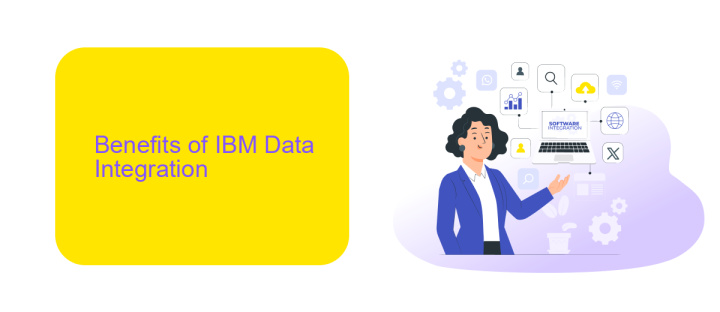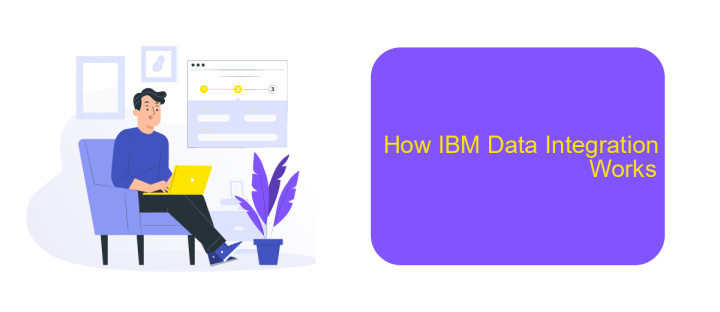IBM Data Integration
IBM Data Integration is a comprehensive suite of tools and solutions designed to streamline the process of combining data from various sources. By leveraging IBM's advanced technologies, organizations can ensure data consistency, improve decision-making, and enhance operational efficiency. This article explores the key features, benefits, and practical applications of IBM Data Integration, demonstrating how it can transform your data management strategy.
Introduction
IBM Data Integration is a comprehensive solution designed to seamlessly connect and integrate data from various sources across an organization. It facilitates the movement, synchronization, and transformation of data, ensuring that businesses can leverage accurate and timely information for decision-making. This integration capability is critical in today's data-driven world, where the volume and variety of data continue to grow exponentially.
- Efficient data synchronization across different platforms
- Real-time data access and processing
- Advanced data transformation and cleansing
- Scalability to handle large volumes of data
- Secure and compliant data handling
Additionally, services like ApiX-Drive can complement IBM Data Integration by providing easy-to-use tools for setting up and managing integrations. ApiX-Drive offers a user-friendly interface and pre-built connectors, enabling businesses to automate data flows without extensive coding. This combination of IBM’s robust integration capabilities and ApiX-Drive’s intuitive setup can significantly enhance an organization's data strategy, ensuring seamless and efficient data operations.
Benefits of IBM Data Integration

IBM Data Integration offers a robust solution for seamlessly connecting diverse data sources, enabling businesses to consolidate their data into a unified view. This integration capability enhances decision-making processes by providing real-time access to accurate and comprehensive data. Additionally, IBM's advanced data integration tools ensure that data quality is maintained, reducing errors and inconsistencies that can arise from manual data handling.
Another significant benefit of IBM Data Integration is its scalability and flexibility. It supports a wide range of data formats and sources, making it adaptable to various business needs. Furthermore, the integration process can be streamlined using services like ApiX-Drive, which automates the connection between different applications and systems. This automation not only saves time but also minimizes the risk of human error, ensuring a smoother and more efficient data integration experience. By leveraging IBM Data Integration, businesses can achieve greater operational efficiency and a competitive edge in their respective industries.
Key Features of IBM Data Integration

IBM Data Integration offers a comprehensive suite of tools designed to streamline and optimize data integration processes across various platforms. These features ensure seamless data flow, improved data quality, and enhanced operational efficiency.
- Data Connectivity: IBM Data Integration supports a wide range of data sources, including databases, cloud services, and on-premises systems, ensuring versatile and robust data connectivity.
- Data Transformation: Advanced data transformation capabilities allow users to cleanse, enrich, and transform data to meet specific business requirements, ensuring high-quality data output.
- Scalability: The platform is designed to handle large volumes of data, making it suitable for enterprises of all sizes. It scales effortlessly to accommodate growing data needs.
- Real-time Integration: Real-time data integration ensures that data is always up-to-date, providing accurate and timely insights for decision-making processes.
- Security and Compliance: Robust security measures and compliance features ensure that data is protected and meets industry standards and regulations.
Additionally, tools like ApiX-Drive can be integrated with IBM Data Integration to further simplify the setup and management of data integrations. ApiX-Drive offers user-friendly interfaces and automation capabilities, allowing businesses to connect various applications and services seamlessly.
How IBM Data Integration Works

IBM Data Integration is a powerful tool designed to seamlessly integrate data from various sources, ensuring a unified and consistent data flow across your organization. The platform leverages advanced technologies to transform, cleanse, and consolidate data, making it readily available for analysis and decision-making.
At the core of IBM Data Integration is its ability to connect to a wide range of data sources, including databases, cloud services, and on-premises systems. The integration process is streamlined through a user-friendly interface, allowing both technical and non-technical users to set up and manage data flows efficiently.
- Data connectivity: Supports multiple data sources, including SQL, NoSQL, and cloud-based databases.
- Data transformation: Offers robust tools to cleanse, enrich, and transform data.
- Real-time integration: Ensures data is synchronized in real-time across all systems.
- Scalability: Can handle large volumes of data, accommodating growing business needs.
Additionally, services like ApiX-Drive can complement IBM Data Integration by providing easy-to-use automation tools that further simplify the process of connecting and synchronizing data across various applications and platforms. This synergy ensures that businesses can maintain a cohesive and up-to-date data environment.


Case Studies and Success Stories
One of the most compelling case studies of IBM Data Integration is its implementation at a leading global retailer. The retailer faced challenges in synchronizing data across multiple platforms, leading to inefficiencies and lost sales opportunities. By leveraging IBM Data Integration solutions, they achieved seamless integration of their inventory, sales, and customer data. This integration allowed real-time updates and insights, resulting in a 20% increase in sales and a 15% reduction in operational costs within the first year.
Another success story involves a financial services firm that utilized IBM Data Integration to streamline their data management processes. Prior to implementation, the firm struggled with disparate data sources and inconsistent data quality. With IBM's robust integration capabilities, they were able to unify their data, ensuring consistency and accuracy. This transformation not only improved their regulatory compliance but also enhanced their decision-making processes. Additionally, by integrating ApiX-Drive, the firm automated data workflows between various applications, further enhancing efficiency and reducing manual errors.
FAQ
What is IBM Data Integration?
How does IBM Data Integration work?
What are the key components of IBM Data Integration?
How can I automate data integration tasks?
What are the benefits of using IBM Data Integration?
Do you want to achieve your goals in business, career and life faster and better? Do it with ApiX-Drive – a tool that will remove a significant part of the routine from workflows and free up additional time to achieve your goals. Test the capabilities of Apix-Drive for free – see for yourself the effectiveness of the tool.

